INSTRUCTIONS TO CANDIDATES
- This paper has 12 printed pages.
- Answer all questions in section A and B.
- Mathematical tables or non-programmable electronic calculators maybe used

QUESTIONS
SECTION A (48 marks)
Answer all the questions in this section in the spaces provided.
-
- Outline the procedure of connecting an ammeter to take a measurement in a circuit. (2 marks)
- Figure 1 shows a resistor with color bands.
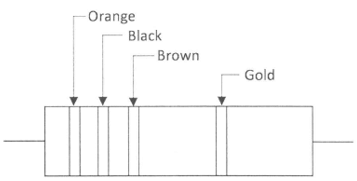
Figure 1
Determine its:- Nominal resistance: (1 mark)
- Maximum resistance. (2 marks)
-
- State two reasons for using a circuit diagram when troubleshooting n electrical equipment. (2 marks)
- State four components of a bill of materials in project fabrication. (2 marks)
-
- Explain the effect of each of the following in a p-n junction: (2 marks)
- Forward bias;
- Reverse bias.
- State the meaning of each of the following ratings of a light emitting diode: (2 marks)
- IF(max);
- VF(typ);
- Explain the effect of each of the following in a p-n junction: (2 marks)
- Figure 2 shows a transformer whose primary resistance is 1kΩ.
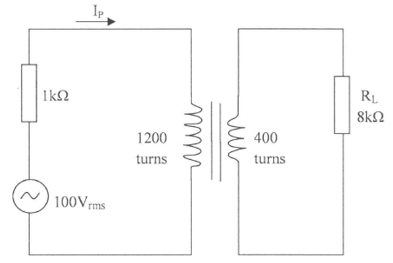
Figure 2
Determine the: (5 marks)- Primary current IP;
- Voltage across RL.
- With the aid of labeled diagrams, illustrate the arrangement of magnetic domains in:
- Unmagnetised material;
- Magnetized material. (3 marks)
-
- Figure 3 shows a voltage divider circuit.
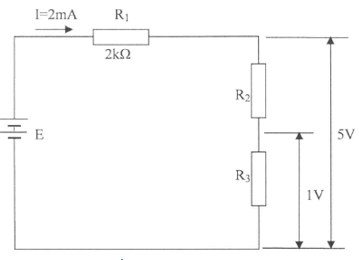
Figure 3
Determine the value of; (4 marks)- E
- R2;
- R3.
- A consumer has the following loads connected to the supply.
- Five 60W lights for 4 hours;
- One 2kW kettle for ½ hour.
Calculate the total:- Energy consumed;
- Cost of energy used if the rate is 80 cents per unit. (3 marks)
- Figure 3 shows a voltage divider circuit.
-
- State three safety precautions to be observed by an operator using portable electric drill. (3 marks)
- Name four communication service provider companies currently operating in Kenya. (2 marks)
-
- Name four types of insulating materials used in electrical circuits. (2 marks)
- State three advantages of PVC conduit wiring systems. (3 marks)
-
- Calculate the inductance required to cause resonance at 150kHZ when the capacitance is 1.0pF. (2 marks)
- In a 240V circuit, the load current is 2.5A. If the power factor is 0.6, calculate: (3 marks)
- Apparent power;
- True power.
- Make a free hand isometric drawing of a conduit saddle in the space below. (5 marks)
SECTION B (52 marks)
Answer any four questions from this section in the spaces provided.
- Figure 4, in the next page, shows the front elevation, end elevation and an incomplete plan of an object.
- Complete the plan.
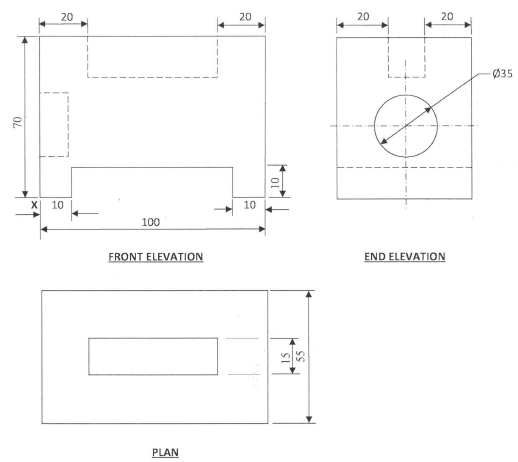
Figure 4 - On the isometric grid provided, draw the isometric projection of the object making X as the lowest point. (13 marks)
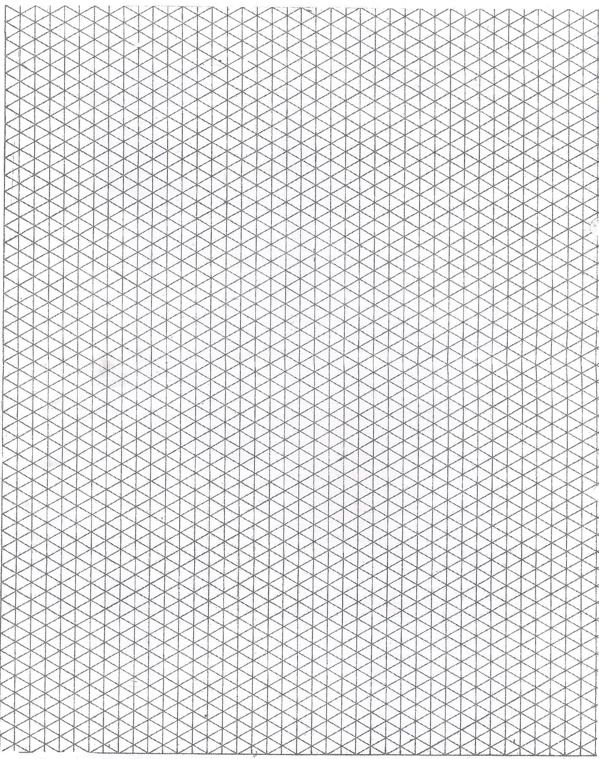
- Complete the plan.
- Figure 5 shows waveforms A and B. their vertical and horizontal scales are given.
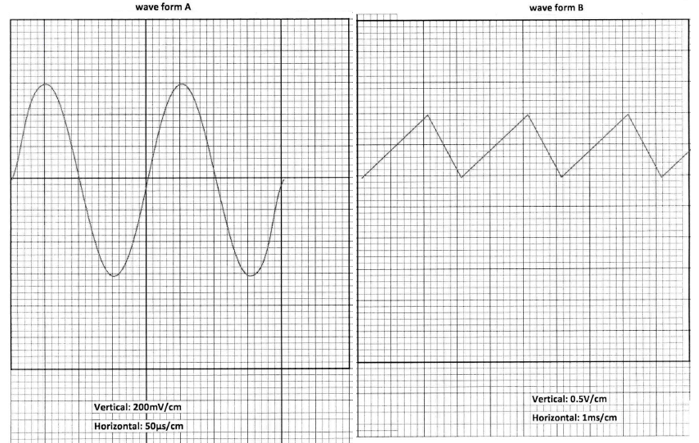
Figure 5- Name each of the two waveforms. (1 mark)
- State the number of cycles displayed in each waveform. (2 marks)
- Calculate; (10 marks)
- Frequency of waveform A;
- Amplitude of each waveform;
- RMS voltage of waveform A
-
- Draw a labeled diagram of a consumer unit with the following circuits. (11 marks)
- Lighting circuit
- Water heater circuit;
- Bell circuit
- Cooker circuit;
- Ring circuit.
- State the typical fuse ratings for any four of the final circuits in (a). (2 marks)
- Draw a labeled diagram of a consumer unit with the following circuits. (11 marks)
- Figure 6 shows an amplifier circuit whose current gain is 50.
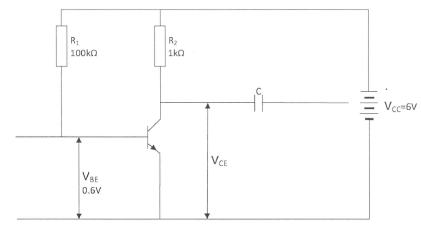
Figure 6-
- Name the type of transistor.
- State the function of the capacitor C.
- Name the type of biasing. (3 marks)
- Calculate the values of; (10 marks)
- Voltage across R1;
- Base current IB;
- Collector current IC;
- Voltage VCE.
-
- Figure 7 shows an R-L-C circuit.
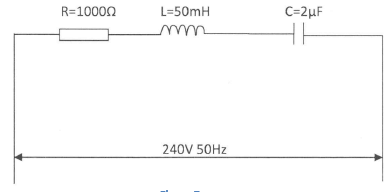
Figure 7- Calculate the:
- Impedance of the circuit; (7 marks)
- Current. (3 marks)
- Draw the phasor diagram. (3 marks)
- Calculate the:

MARKING SCHEME
-
- Procedure of connecting an ammeter to take measurements in a circuit
- Turn - off the power
- Ammeter should be connected in series with the load current.
- Observe polarity.
- Select the range starting from the highest.
-
- Nominal resistance
Orange Black
30
Brown
x 101 = 300
Nominal = 300Ω - Maximum resistance
300 ± 5% = 315Ω
- Nominal resistance
- Procedure of connecting an ammeter to take measurements in a circuit
-
- Circuit diagram
- Shows connection of every component.
- Shows values of components.
- Shows the position of the components.
- Shows functionality of the circuit.
- Bills of materials
- Materials/parts.
- Quantity.
- Size.
- Estimate costs.
- Circuit diagram
-
-
- Forward bias reduces the PN-junction (depletion layer) and hence the diode conducts
- Reverse bias increases the PN-junction (depletion layer) hence the diode does not conduct.
-
- IF(max) is the maximum forward current that the diode can pass without burning out.
- VF (typ) is the forward voltage across the diode at the typical operating current.
-
-
- I=V/R=100/1000=0.1A
-

-
-
- E=5+(1.2mAx2000)=7.4V
- R2=(5-1)/(1.2mA)=3,333.33Ω
- R3=1/1.2mA=833.33Ω
-
- Energy consumed
Lights5x6x4/1000=1.2kwh
Kettle1x2x0.5=1.0kwh
Total energy = 2.2kwh - Cost of energy
= 2.2 x80 = 1.76 sh
- Energy consumed
-
- Safety precautions to be observed
-
- Ensure that the equipment is properly earthed.
- Do not use it in damp areas.
- Always remove the plug from the socket when the equipment is not in use.
- When using extensions, ensure the joints are firm and insulated using the electricians insulation tape.
- Hold it firmly.
- Avoid loose clothing like ties.
- Communication service providers in Kenya
- Telkom Kenya
- Safaricom
- Airtel
- Yu
or any other existing ones
-
-
- Insulating materials used in electrical circuits
- PVC .
- Porcelain
- Magnesium oxide
- Paper
- Rubber
- Air
- Formica
- Advantages of PVC
- Ease of erection.
- It is cheap.
- It is resistant to corrosion.
- It is light.
- There is no risk to earth leaks.
- Insulating materials used in electrical circuits
-
- Inductance required
L= 1 = 1 =1.12579H
(4x∏x∏xfxfxC) (4x∏x∏x150000x150000x1.0pF) -
- Apparent power
P=IV=2.5x240=600 VA - True power
= apparent power X power factor
=600 X 0.6=360W
- Apparent power
- Inductance required
-
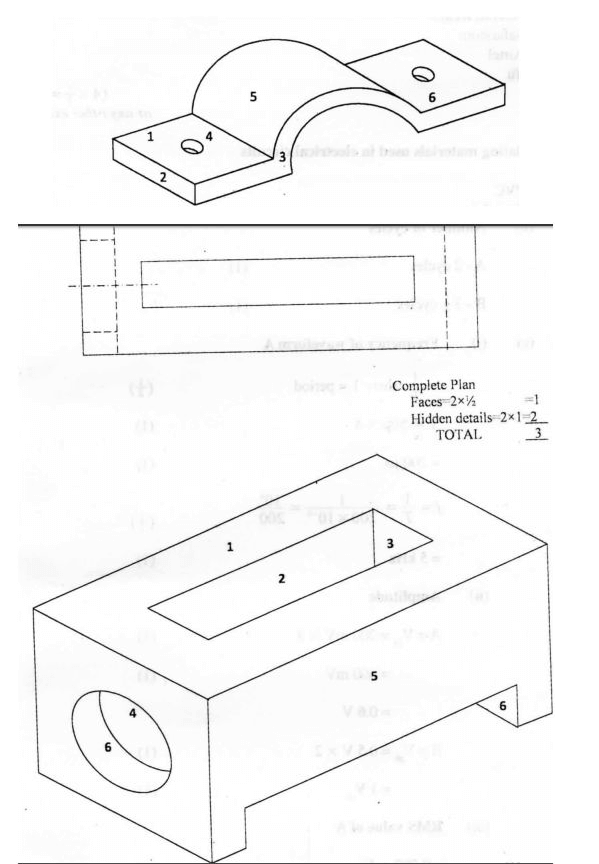
-
- Name of waveforms
A - sine wave
B - saw tooth - Number of cycles
A - 2 cycles (1)
B - 3 cycles (1) -
- Frequency of waveform A
Where T=period
T= 50µsx4
=200µs
f= 1 = 1 =5000Hz=5kHz
T (200/1000000) - Amplitude
A=Vpeak=200mVx3=600mV=0.6V
B=Vpeak=0.5V X 2=1V - RMS value of A
=0.707xVp=0.707x0.6=0.424V
- Frequency of waveform A
- Name of waveforms
-
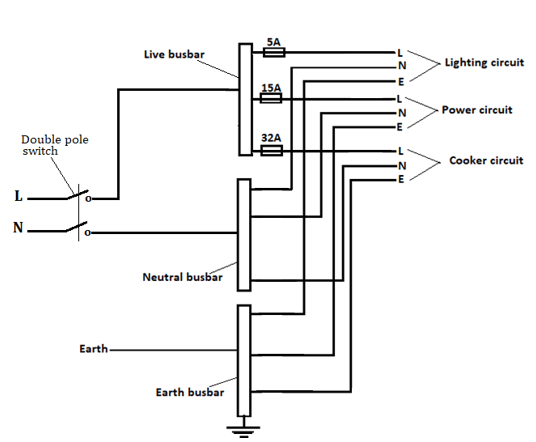
Correct drawing (6 marks)
Each subcircuit correctly labelled (½x6=3 marks) -
- Type of transistor
NPN (1)
Function of capacitor C
To block D.C (1)
Type of biasing
Fixed bias (1) -
- VR=VCC-VBE =60-0.6=5.4V
- IB= 5.4 =0.54A
10000 - IC=βxIB=54μAx50=2.7mA
- RCIC= 2.7mAx1 x 103=2.7V
VCE=VCC-VR2
= 6-2.7V
=3.3V
- Type of transistor
-
-
- XL=2∏fL
=2x∏x50x50x10-3
=15.708Ω (2 marks)
XC= 1
(2∏fC)
= 1
(2x∏x50x2x10-6)
=1591.5494Ω (2 marks)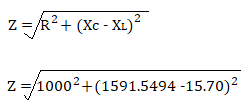
= 1866.36Ω (3 marks) - I=E/Z=240/1866.36=0.1286A (3 marks)
- XL=2∏fL
-
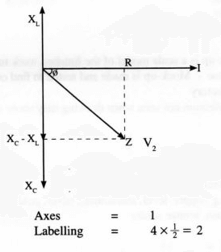
-
Download Electricity P1 Questions and Answers - Wisdom Pre-Mock Form 4 Exams 2021/2022.
Tap Here to Download for 50/-
Get on WhatsApp for 50/-
Why download?
- ✔ To read offline at any time.
- ✔ To Print at your convenience
- ✔ Share Easily with Friends / Students

